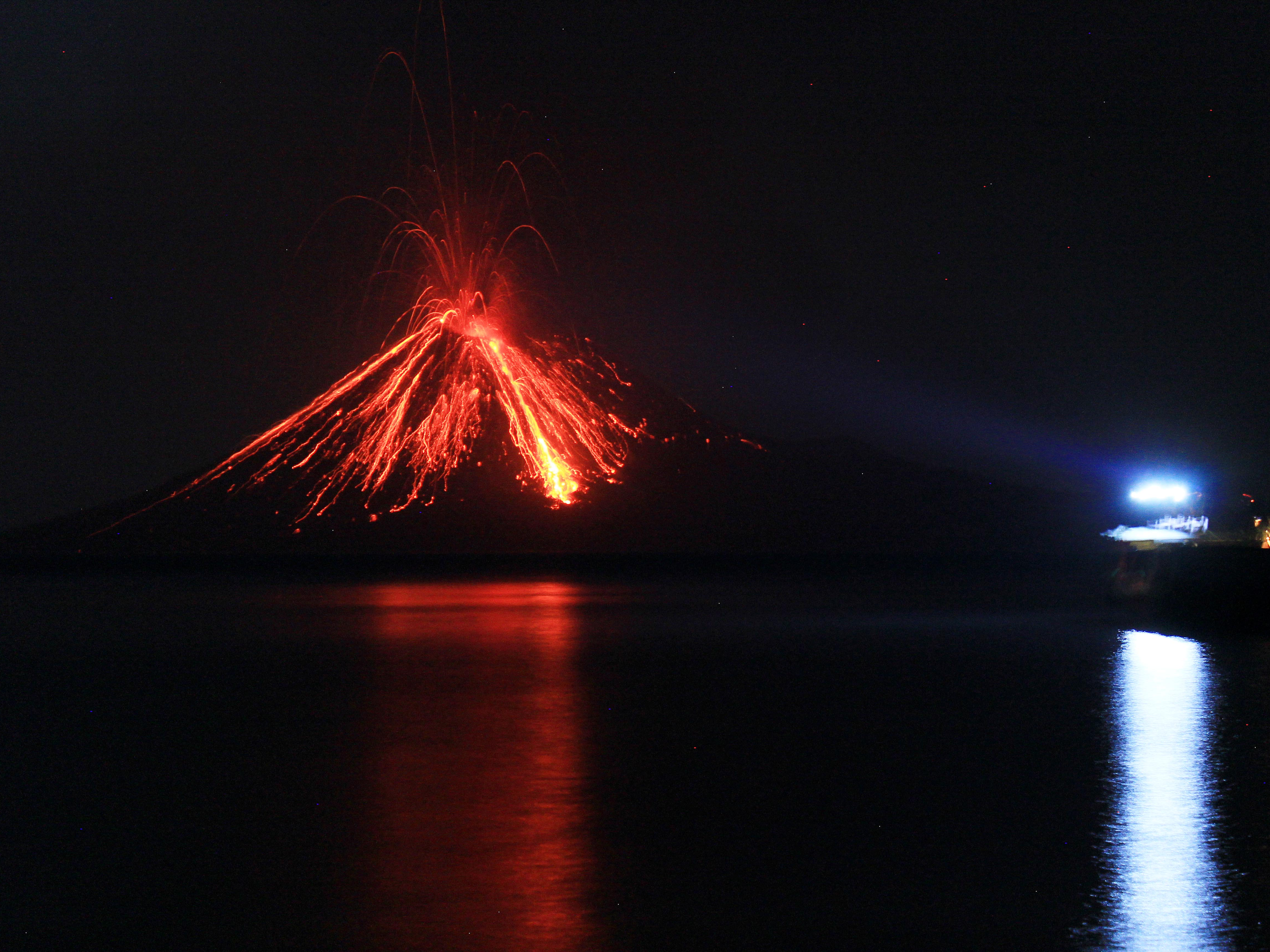- The Anak Krakatau volcano (Malay translation: child of Krakatoa) is one of the most active in Indonesia.
- On December 22, 2018, part of the volcanic crater collapsed into the surrounding water, triggering tsunami waves up to 10 feet high.
- The waves pummeled the islands of Java and Sumatra, killing more than 400 people and injuring 1,400. Thousands lost their homes.
- The volcano used to be 1,108 feet high, but shrank to a quarter of its original size after the collapse.
On December 22, 2018, tsunami waves hit the coasts of the Indonesian islands Sumatra and Java, killing more than 400 people and injuring well over a thousand.
The tsunami was caused by the collapse of a 64-hectare (158-acre) section of the Anak Krakatau volcano.
“This caused an underwater landslide,” Dwikorita Karnawati, head of the Indonesian meteorological agency, told The Guardian.
The collapse transformed Anak Krakatau.
Øystein Lund Andersen, a nature photographer who documents Indonesian volcanoes, shared the following before-and-after images on Twitter last week. One photo of the volcano was taken August 5, 2018, while the other was captured January 11, 2019.
Image-comparison of Anak-Krakatau before and after collapse, showing the major changes to the volcanic Island. First photo captured 5th August and second photo taken by @EarthUncutTV today. 1/3 #AnakKrakatau pic.twitter.com/uXcU3cGydt
— Øystein L.A. (@oysteinvolcano) January 11, 2019
The following images, many taken by the WorldView-2 satellite, show Anak Krakatau's stunning transformation. The collapse reduced the 1,100-foot-tall volcano to a crater a quarter of the size.
Anak Krakatau is one of the world's most famous volcanoes.

In 1883, the Krakatau (Krakatoa) volcano erupted in a series of four explosions that destroyed the surrounding island and killed more than 30,000 people. The eruption wreaked havoc on global weather patterns for the next five years.
Some 50 years later, the island of Anak Krakatau (Anak Krakatoa) emerged from the site of Krakatoa's fiery death.
Anak Krakatau - located east of Jakarta, Indonesia - has been active since 1927 and erupted nearly every year, according to a volcanologist-run website called Volcano Discovery, which catalogs information about volcanoes.
Anak Krakatau grew steadily each year until the partial collapse in December 2018. This is what it looked like in November 2017.

Anak Krakatau had been growing taller by an average of about 5 meters (16 feet) per year, according to EarthSky.
Satellite imagery shows what the volcano looked like after the collapse — it's as if a giant thumb pushed down on Anak Krakatau.

This image is more zoomed out than the previous one, so it also includes the islands that surround the volcano. But it's clear that, at the top of Anak Krakatau, there's now a gaping hole. The trees and wildlife that once lived there are also gone.
After the collapse, Anak Krakatau shrank to just a quarter of its original height.

It shrank from a height of 1,108 feet to 361 feet. The volcano lost two-thirds (some 100 million cubic meters) of its volume.
Anak Krakatau spewed so much ash into the air that planes had to be re-routed around the Sunda Strait area.

Anak Krakatau is still active; the collapse didn't stop its volcanic activity.
Subsequent eruptions will help to rebuild the volcano, forming a new island.

A period of high-intensity volcanic activity followed the collapse during the final weeks of December, which means the island is already rebuilding itself, according to Michigan Tech volcanologist Simon Carn.
Indonesia needs to be prepared for future tsunamis, experts say.

The December 22 tsunami came without warning.
Richard Teeuw of the University of Portsmouth told The Guardian that "the likelihood of further tsunamis in the Sunda Strait will remain high while Anak Krakatau volcano is going through its current active phase, because that might trigger further submarine landslides."

